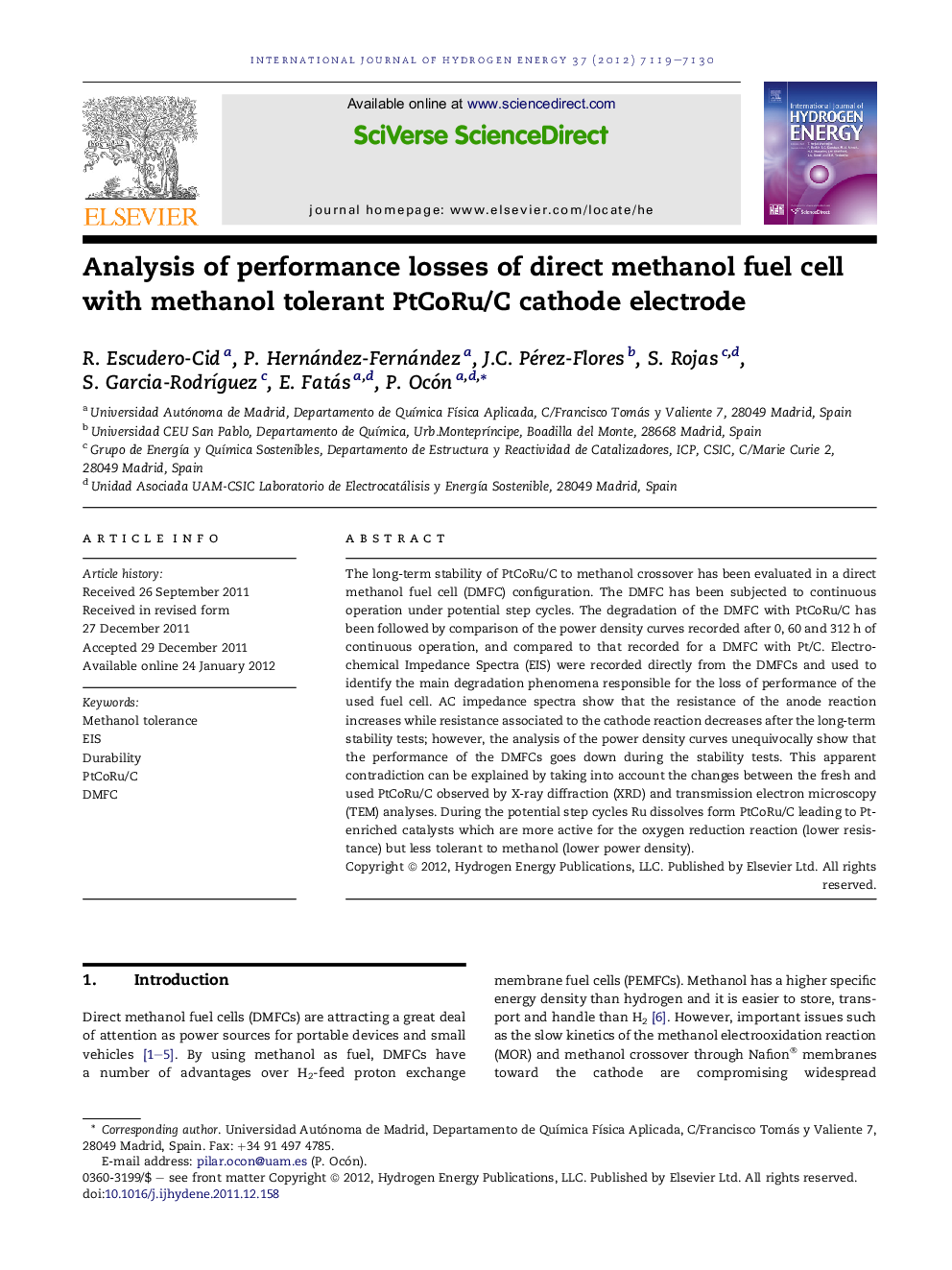| Article ID | Journal | Published Year | Pages | File Type |
|---|---|---|---|---|
| 1276658 | International Journal of Hydrogen Energy | 2012 | 12 Pages |
The long-term stability of PtCoRu/C to methanol crossover has been evaluated in a direct methanol fuel cell (DMFC) configuration. The DMFC has been subjected to continuous operation under potential step cycles. The degradation of the DMFC with PtCoRu/C has been followed by comparison of the power density curves recorded after 0, 60 and 312 h of continuous operation, and compared to that recorded for a DMFC with Pt/C. Electrochemical Impedance Spectra (EIS) were recorded directly from the DMFCs and used to identify the main degradation phenomena responsible for the loss of performance of the used fuel cell. AC impedance spectra show that the resistance of the anode reaction increases while resistance associated to the cathode reaction decreases after the long-term stability tests; however, the analysis of the power density curves unequivocally show that the performance of the DMFCs goes down during the stability tests. This apparent contradiction can be explained by taking into account the changes between the fresh and used PtCoRu/C observed by X-ray diffraction (XRD) and transmission electron microscopy (TEM) analyses. During the potential step cycles Ru dissolves form PtCoRu/C leading to Pt-enriched catalysts which are more active for the oxygen reduction reaction (lower resistance) but less tolerant to methanol (lower power density).
► PtCoRu nanoparticles supported on Carbon Vulcan were prepared by polyol method. ► After 60 h of running time the losses in PtCoRu MEA of DMFC are 25% only. ► Increase in the particle size after cycling was confirmed after running time. ► Higher durability under stop&stop life test for trimetallic catalyst was obtained.
